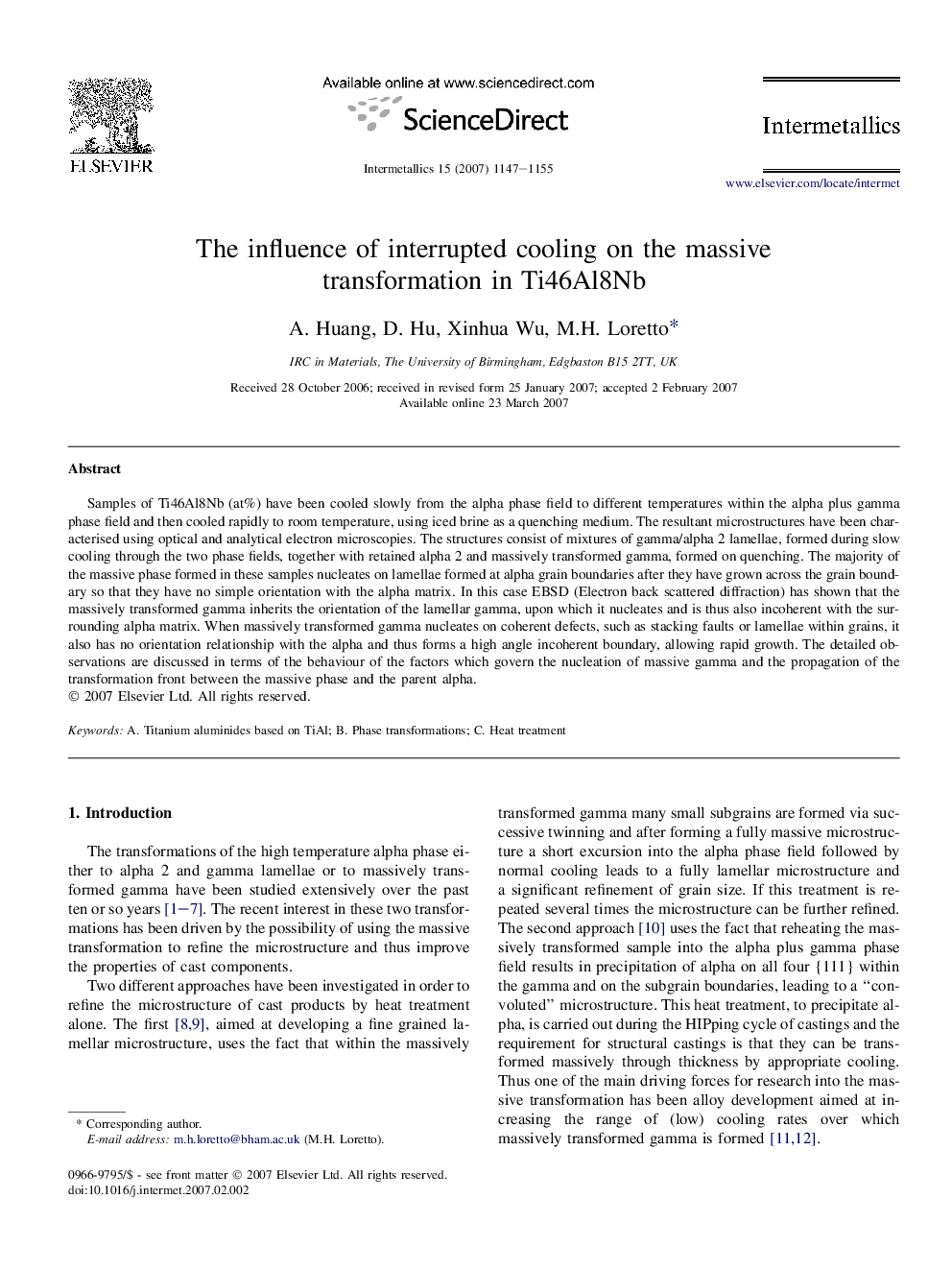| Article ID | Journal | Published Year | Pages | File Type |
|---|---|---|---|---|
| 1601869 | Intermetallics | 2007 | 9 Pages |
Abstract
Samples of Ti46Al8Nb (at%) have been cooled slowly from the alpha phase field to different temperatures within the alpha plus gamma phase field and then cooled rapidly to room temperature, using iced brine as a quenching medium. The resultant microstructures have been characterised using optical and analytical electron microscopies. The structures consist of mixtures of gamma/alpha 2 lamellae, formed during slow cooling through the two phase fields, together with retained alpha 2 and massively transformed gamma, formed on quenching. The majority of the massive phase formed in these samples nucleates on lamellae formed at alpha grain boundaries after they have grown across the grain boundary so that they have no simple orientation with the alpha matrix. In this case EBSD (Electron back scattered diffraction) has shown that the massively transformed gamma inherits the orientation of the lamellar gamma, upon which it nucleates and is thus also incoherent with the surrounding alpha matrix. When massively transformed gamma nucleates on coherent defects, such as stacking faults or lamellae within grains, it also has no orientation relationship with the alpha and thus forms a high angle incoherent boundary, allowing rapid growth. The detailed observations are discussed in terms of the behaviour of the factors which govern the nucleation of massive gamma and the propagation of the transformation front between the massive phase and the parent alpha.
Related Topics
Physical Sciences and Engineering
Materials Science
Metals and Alloys
Authors
A. Huang, D. Hu, Xinhua Wu, M.H. Loretto,
